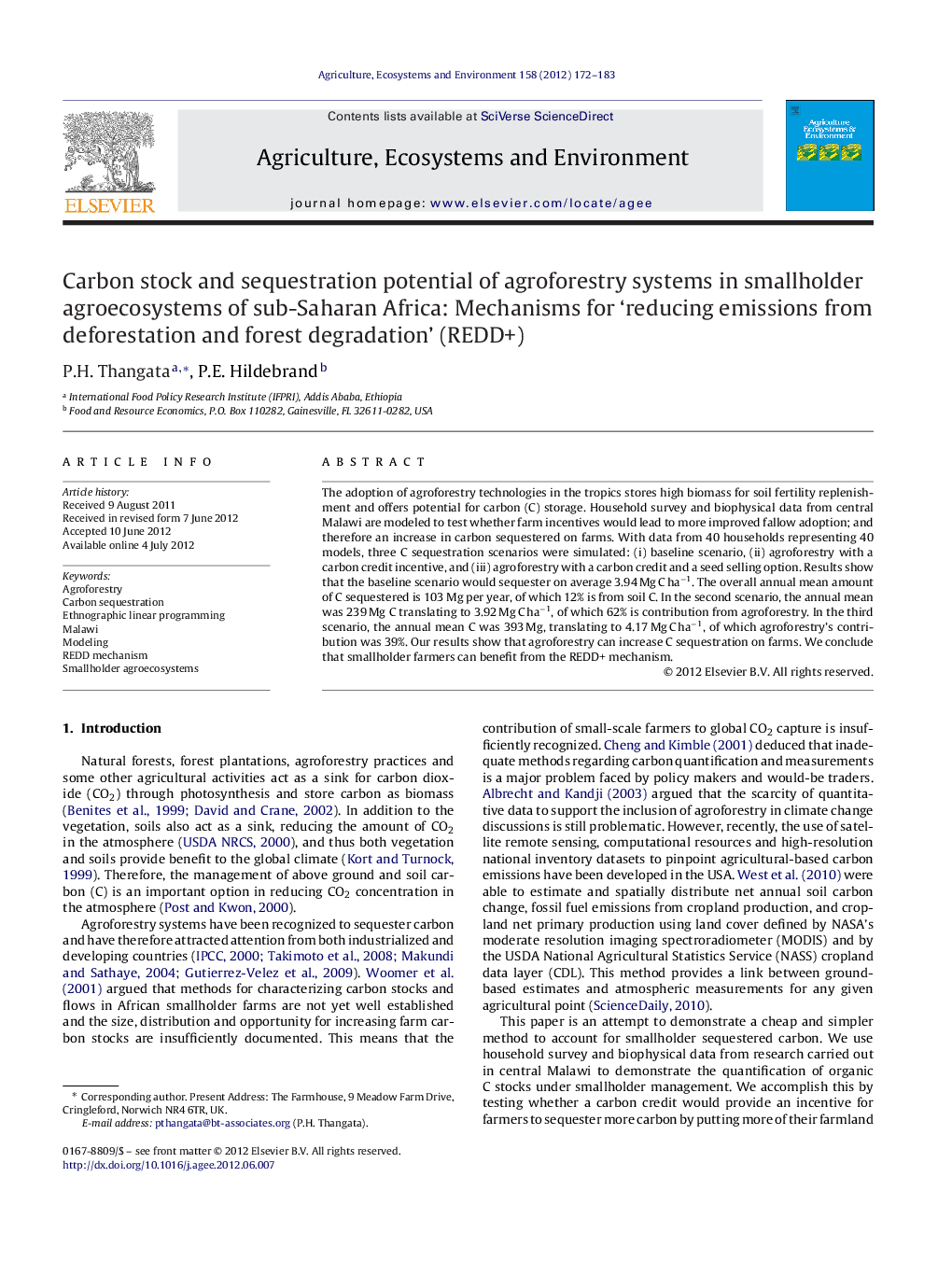| Article ID | Journal | Published Year | Pages | File Type |
|---|---|---|---|---|
| 2414504 | Agriculture, Ecosystems & Environment | 2012 | 12 Pages |
The adoption of agroforestry technologies in the tropics stores high biomass for soil fertility replenishment and offers potential for carbon (C) storage. Household survey and biophysical data from central Malawi are modeled to test whether farm incentives would lead to more improved fallow adoption; and therefore an increase in carbon sequestered on farms. With data from 40 households representing 40 models, three C sequestration scenarios were simulated: (i) baseline scenario, (ii) agroforestry with a carbon credit incentive, and (iii) agroforestry with a carbon credit and a seed selling option. Results show that the baseline scenario would sequester on average 3.94 Mg C ha−1. The overall annual mean amount of C sequestered is 103 Mg per year, of which 12% is from soil C. In the second scenario, the annual mean was 239 Mg C translating to 3.92 Mg C ha−1, of which 62% is contribution from agroforestry. In the third scenario, the annual mean C was 393 Mg, translating to 4.17 Mg C ha−1, of which agroforestry's contribution was 39%. Our results show that agroforestry can increase C sequestration on farms. We conclude that smallholder farmers can benefit from the REDD+ mechanism.
► We model household data to test whether farm incentives lead to agroforestry adoption. ► This would lead to an increase in carbon sequestered on farms. ► Results show that agroforestry can increase C sequestration on farms. ► Smallholder farmers can benefit from the REDD mechanism.
